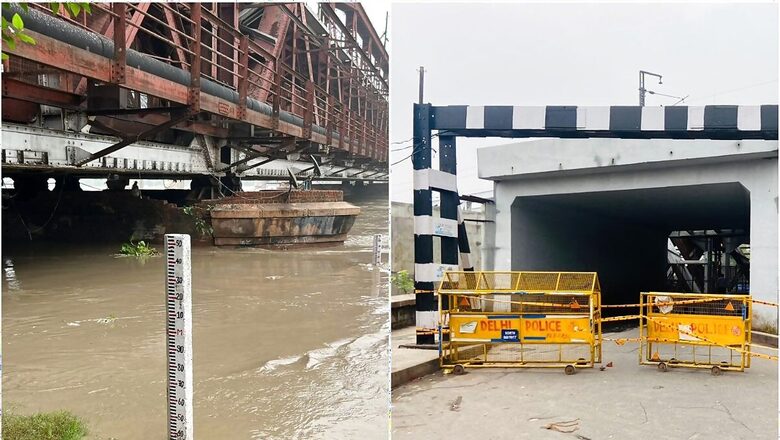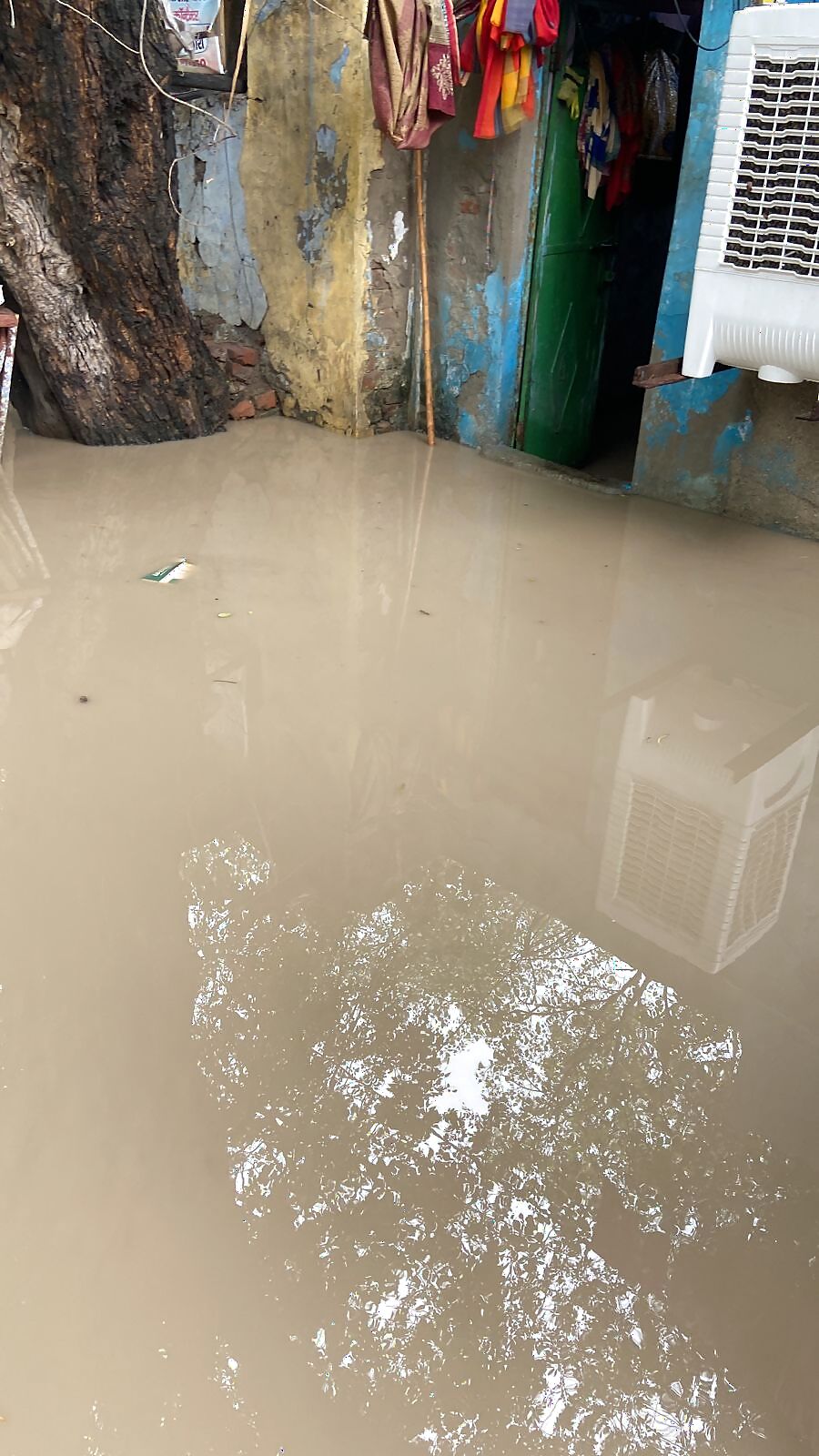
views
Rail and road traffic over Yamuna bridge in Delhi was suspended after the river breached the danger mark following heavy rain over the last few days in the city. The river crossed the danger mark of 205.33 metres in Delhi on Monday evening, much earlier than anticipated.
Officials on Tuesday morning said Yamuna in Delhi has also exceeded the evacuation mark of 206 metres, prompting the relocation of people residing in flood-prone areas to safer locations.
LIVE Weather Updates
At the time of writing this report, water had entered Yamuna Bazar area near Kashmere Gate, with knee-deep level at some places.

Northern Railways on Tuesday morning informed that rail traffic over the old Yamuna bridge was temporarily suspended from 06.00 am. A little later, road traffic was also suspended.
Delhi | At 8 am today, water level of River Yamuna recorded at 206.32 metres at Old Railway Bridge, flowing above the danger level. The highest flood level of the river in Delhi is 207.49 metres. As a precautionary measure, Railway and traffic movement on Old Railway Bridge has… pic.twitter.com/V9qjGHKLLj
— ANI (@ANI) July 11, 2023
According to the Central Water Commission’s (CWC) flood-monitoring portal, the water level at the Old Railway Bridge rose to 206.28 metres by 6 am on Tuesday with Haryana releasing more water into the river from the Hathnikund barrage in Yamunanagar. It is expected that the river will rise to 206.65 metres by Tuesday afternoon, before gradually subsiding.
Chief Minister Arvind Kejriwal on Monday had said that a flood-like situation is unlikely in Delhi, but the city government is prepared to tackle any eventuality. Kejriwal had said the evacuation of people from low-lying areas will start once the river breaches the 206-metre mark.
An official from East Delhi district said the evacuation process began on Monday night after floodwaters entered some areas. “Only those living in the affected areas have been shifted to camps on higher grounds,” he said.
According to the irrigation and flood control department, the flow rate at the Hathnikund barrage had shot up to the 3 lakh cusec mark on Monday. Normally, the flow rate at the barrage is 352 cusecs, but heavy rainfall in the catchment areas increases the discharge. One cusec is equivalent to 28.32 litres per second.
The water from the barrage takes around two to three days to reach Delhi. The Delhi government issued a flood warning on Sunday. Authorities have been instructed to stay vigilant and take necessary action in vulnerable areas. Quick response teams and boats have also been deployed.
Parts of North India have been receiving torrential rainfall, with Himachal Pradesh being the worst hit. Apart from Himachal, many areas in Jammu and Kashmir, Uttarakhand, Haryana, Uttar Pradesh and Rajasthan have been recording “heavy to extremely heavy” rain.
The severe downpour has resulted in overflowing rivers, creeks and drains that have massively damaged infrastructure and disrupted essential services in Jammu and Kashmir, Himachal Pradesh, Uttarakhand and Punjab.
Delhi witnessed its highest rainfall (153 mm) in a single day in July since 1982 in the 24-hour period ending at 8:30 am on Sunday. The city received an additional 107 mm rainfall in the subsequent 24 hours, exacerbating the situation.
In Himachal Pradesh, overflowing Beas river has caused extensive damage to buildings, roads, bridges and vehicles as well. Social media has been flooded with videos and pictures of flashfloods and landslides in Himachal Pradesh.




















Comments
0 comment